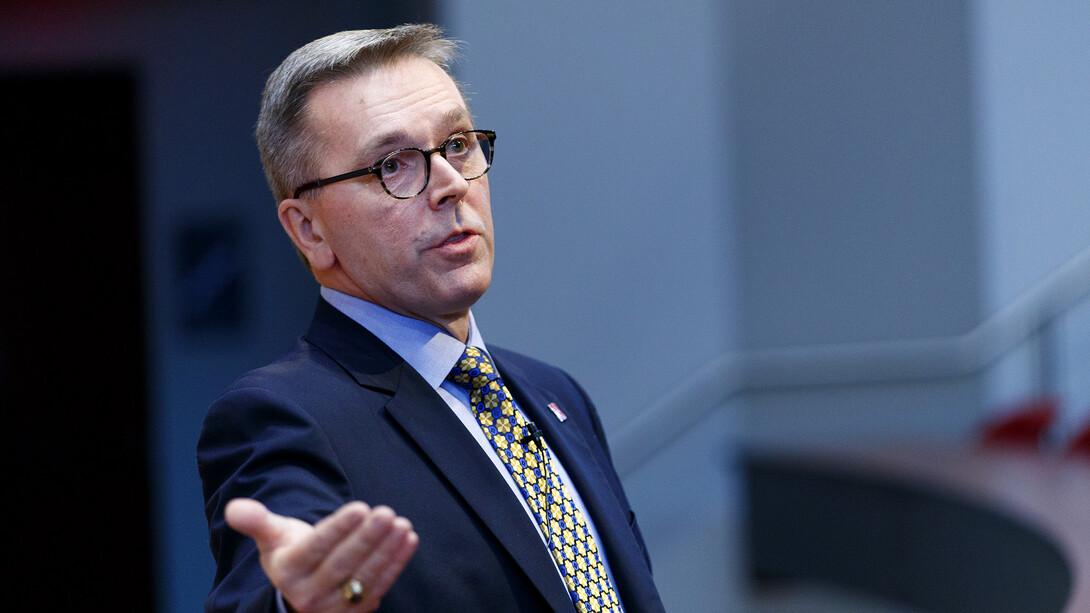
Chancellor Ronnie Green pledged that the state’s flagship land-grant institution will continue to pursue its strategic goals to increase enrollment, research and distinction, even in light of potentially significant budget cuts.
“We are on an upward trajectory,” Green told a group of university leaders gathered for a Jan. 22 administrative leadership town hall meeting. “We can’t let the budget discussion pull us away from focusing on our strategic priorities.”
Green said he hopes to have a new 10-year strategic plan completed in time for unveiling in 2019, the year of the university’s 150th anniversary. He took time to introduce several recently appointed leaders, including Athletic Director Bill Moos, Assistant Vice Chancellor for Student Affairs Jake Johnson, School of Biological Sciences Director Michael Herman and Interim Dean Amy Struthers of the College of Journalism and Mass Communications.
University of Nebraska system President Hank Bounds announced Jan. 16 that Gov. Pete Ricketts’ budget proposal would result in an $11 million reduction for the system for the 2017-18 budget year followed by a $23 million reduction for the 2018-19 budget year.
Green said that the university now faces reductions beyond what can be resolved with budget efficiencies or tuition increases.
“Now it’s academic programs, it’s vertical cuts,” he said, adding that across-the-board cuts are counter to the university’s strategic goals.
The latest proposed reduction amounts are not final, Green said. Bounds and other university officials will appear before the Legislature’s Appropriation Committee on Feb. 14 to make their case for minimizing the cuts. In addition, the Nebraska Economic Forecasting Advisory Board meets Feb. 28 to update its predictions for tax receipts for the coming year. A favorable projection could improve Nebraska’s budget picture. State tax receipts were higher than expected in December.
Even though it may be March before a more definitive figure is known, Green said he already is working with Donde Plowman, executive vice chancellor and chief academic officer, and Michael Boehm, Harlan vice chancellor of the Institute of Agriculture and Natural Resources, to develop budget contingency plans. The cuts, which must be reviewed by the Academic Planning Committee of the Faculty Senate, are expected to be proposed before April 1.
A starting point will be the approximately $5 million in proposed program cuts that were withdrawn before announcement in 2017 because of some improvement in the university’s budget picture. Those proposals are back under consideration, Green said, but additional proposals will be needed.
Criteria for identifying programs for possible cuts include whether or not they are unique or critical to the university’s mission as the statewide flagship of higher education and whether or not they are in high demand as measured by enrollment, student credit hour production, scholarship and faculty numbers, he said.







